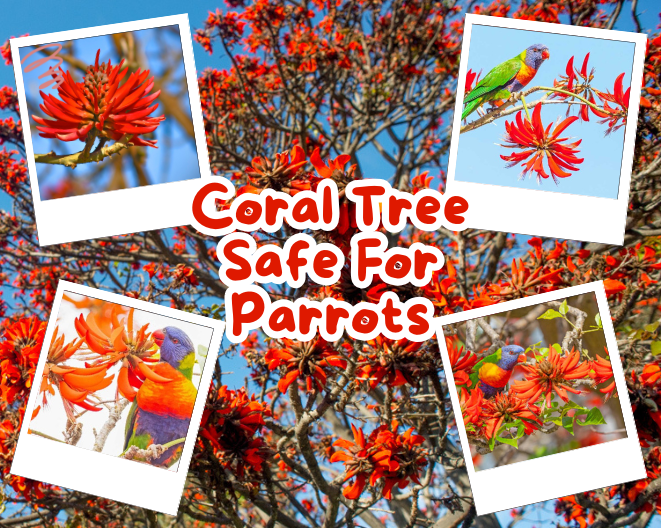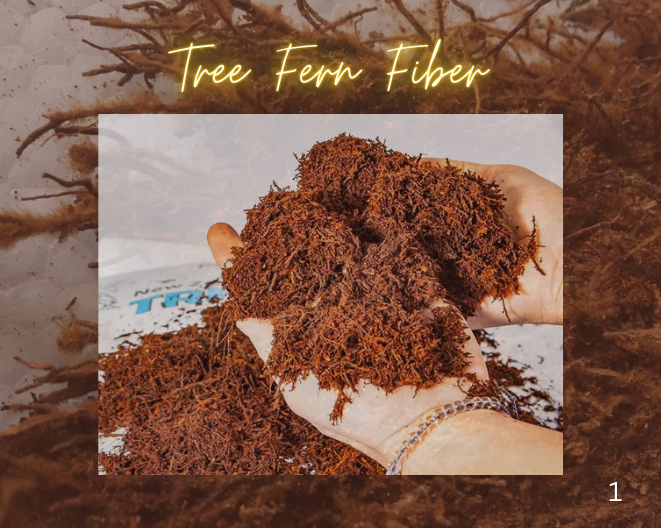As parrot owners, we often strive to provide our feathered friends with a natural, stimulating environment that mimics their wild habitat. Trees, branches, and plants play a crucial role in this effort, offering parrots places to perch, chew, and explore. Among the many trees people consider, the coral tree often comes up. But the question remains: Is the coral tree safe for parrots?
Let’s explore the nature of the coral tree, its potential risks, and how to keep your parrot safe while maintaining a natural environment.
Also read: Tree Fern Fiber: Eco-Friendly Planting Medium for Orchids
What Is a Coral Tree?
Coral trees belong to the genus Erythrina and are known for their vibrant red, coral-like flowers and sturdy branches. Native to tropical and subtropical regions, coral trees are widely admired for their beauty and versatility.
They are often planted as ornamental trees in gardens and parks due to their striking appearance and ability to provide shade. However, for pet owners, understanding a tree’s toxicity is essential before introducing it into their parrot’s environment.
Is the coral tree safe for parrots?
Potential Toxicity
Coral trees contain compounds like alkaloids, which can be toxic to many animals, including birds. While the level of toxicity varies between species of coral trees, certain parts of the tree—like the seeds and bark—are known to pose risks if ingested.
Parrots, being naturally curious, might nibble on branches or seeds, which could lead to potential health issues if the tree is toxic. Symptoms of plant poisoning in parrots include:
- Vomiting
- Diarrhea
- Lethargy
- Loss of appetite
Safe Species Considerations
Not all species of coral trees are equally toxic. Some varieties are considered less harmful, but it’s challenging to identify these without expert knowledge. When in doubt, it’s better to err on the side of caution.
How to Create a Safe Environment for Parrots
1. Research Before Introducing Any Plant
Before incorporating any tree or plant into your parrot’s living space, verify its safety. Trusted resources, such as avian veterinarians or reputable online databases, can help confirm whether a plant is toxic.
2. Offer Safe Alternatives
If you’re unsure about the coral tree or don’t want to take the risk, there are plenty of parrot-safe trees and plants to consider. Popular options include:
- Apple branches (non-sprayed, untreated)
- Willow branches
- Bamboo
- Bottlebrush trees
These trees and branches provide similar benefits, like chewing opportunities and natural perches, without the risks associated with coral trees.
3. Monitor Your Parrot’s Behavior
Even with known safe plants, keep an eye on your parrot’s interactions. Over-chewing or ingesting large amounts of even safe materials can cause digestive upset.
Why Natural Perches Matter for Parrots
Natural perches, like branches, play a vital role in your parrot’s physical and mental health. They help:
- Keep nails trimmed naturally.
- Prevent foot problems like bumblefoot.
- Mimic the textures and variations of wild habitats.
Using tree branches that are safe and untreated can also provide your parrot with an enriching chewing experience, satisfying their natural instincts and reducing boredom.
Ensure are the Branches of Coral Tree Safe for Parrots
If you decide to use tree branches (whether a coral tree or another species), follow these steps to ensure are the branches of a coral tree safe for parrots:
- Clean Thoroughly: Wash branches with a solution of water and vinegar or a mild, bird-safe disinfectant. This removes dirt, bacteria, and potential pesticides.
- Bake or Boil for Sterilization: Sterilize the branches by baking them at a low temperature (around 200°F or 93°C) for an hour. Alternatively, boil them in water for about 30 minutes to kill pests and pathogens.
- Inspect for Signs of Damage or Mold: Before giving the branch to your parrot, inspect it for cracks, rot, or mold, which could pose additional risks.
Alternatives to Coral Tree for Enrichment
If you’re looking for bird-safe enrichment that combines nature and safety, consider these options:
- Parrot Toys: Wooden chew toys made from bird-safe materials.
- Rope Perches: Comfortable and flexible for your parrot’s feet.
- PVC or Manzanita Perches: Durable and easy to clean, with no risk of toxicity.
Consult an Avian Expert
If you’re ever in doubt about the safety of any plant, consult an avian vet or an expert in bird care. They can provide tailored advice based on your parrot’s species, size, and habits.
Conclusion
While the coral tree is undeniably beautiful, its potential toxicity makes it questionable whether the coral tree safe for parrots or not. Providing a safe and enriching environment for your feathered companion means researching every plant or tree before introducing it into their habitat.
With a wide range of bird-safe plants and alternatives available, you can create a natural and engaging space for your parrot without compromising their health. Remember, when in doubt, always choose the safest option—it’s better to be safe than sorry when it comes to your beloved pet!
Also read: Sustainability and Transformation Plans Shaping America’s Future





